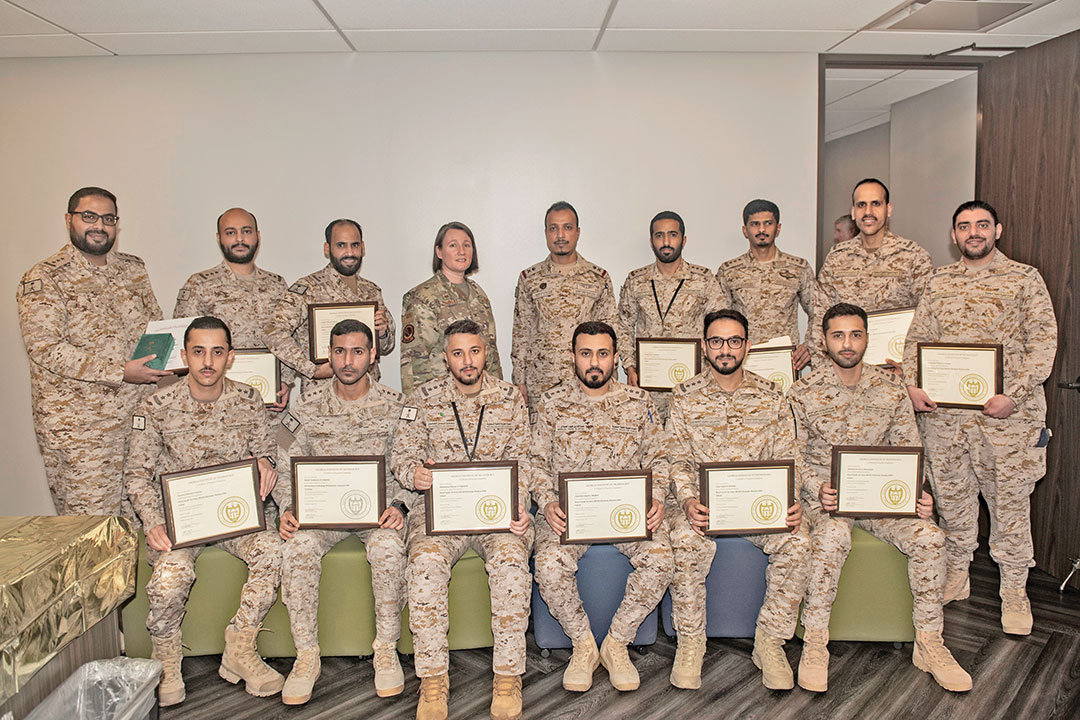UNIPATH STAFF
As adversaries become more capable and threats more complex, enhancing electronic warfare capabilities is increasingly critical to regional security.
Boosting Saudi Arabia’s electronic warfare capabilities, 13 Royal Saudi Air Force officers completed a 3 ½-year electronic warfare training program at Joint Base San Antonio, Texas, in March 2024.
During a ceremony attended by senior U.S. Air Force and Saudi military leaders, the Saudi officers received Electronic Warfare Officer training certificates. The U.S. Air Force noted that these students are among the best-trained electronic warfare and cyber experts in the world.
The program consists of 4,400 hours of instruction, covering four phases, 34 courses, and many simulations and exercises.
“We are very proud of you, and on behalf of His Royal Highness for the Saudi Air Force Commander, I congratulate you. … We are looking forward to you resuming your duties and missions,” said Maj. Gen. Fahad Al-Julaihim, Royal Saudi Air Force Deputy Director for Training.
Electronic warfare encompasses a wide array of activities, such as the use of the electromagnetic spectrum in military conflicts, jamming enemy communications, intercepting signals and frequency-hopping to prevent enemy forces from listening to communication.

JOINT BASE SAN ANTONIO
“You are the beneficiaries of a one-of-a-kind training course tailored specifically to support the Royal Saudi Air Force,” said Col. Casey Pombert, U.S. Air Force Security Assistance and Training Squadron commander. “I wish each of you great success in all your future endeavors.”
Although the line between the two continues to blur, electronic warfare differs from cyberwarfare because the former targets hardware and signals while the latter targets software and data.
Electronic warfare mainly focuses on the use of the electromagnetic spectrum — like radio waves — to detect, intercept, and jam enemy communications and radar signals. It’s often enlisted against adversarial drones to scramble their navigation.
Cyberwarfare refers to digital attacks to target computer systems, networks and digital infrastructure.
The U.S. defense and military relationship with Saudi Arabia is formidable. It involves military training programs, bilateral and joint military exercises, intelligence sharing, defense technology, and arms sale.
And the two countries cooperate closely to address regional and global security challenges such as terrorism, piracy, and trafficking in humans, weapons and narcotics.
In May 2024, the Native Fury exercise demonstrated the ability of U.S., Saudi and Emirati forces to move an amphibious convoy 1,900 kilometers across the Arabian Peninsula, offering reassurance in case maritime shipping lanes are ever disrupted. Sources: Defense-arab.com, U.S. Department of Defense

